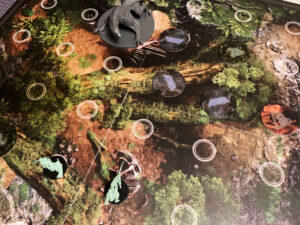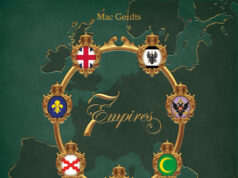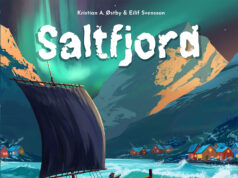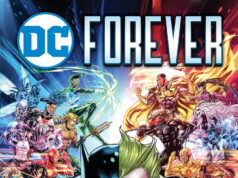 I grew up playing a lot of video games and, especially early on, many of them weren’t great. Dungeons and Dragons and early video games emulating D&D, like Temple of Apshai, were dungeon crawlers. Then someone along the way realized that slaughtering 20 goblins and eight skeletons for 7 silver pieces wasn’t as fun as just fighting the dragon at the end of the dungeon and thus the boss battlers entered the world.
I grew up playing a lot of video games and, especially early on, many of them weren’t great. Dungeons and Dragons and early video games emulating D&D, like Temple of Apshai, were dungeon crawlers. Then someone along the way realized that slaughtering 20 goblins and eight skeletons for 7 silver pieces wasn’t as fun as just fighting the dragon at the end of the dungeon and thus the boss battlers entered the world.
Monster Hunter World is a board game based on the video game of the same name that’s a boss battler that pits one to four hunters against a monster in a world. Each battle takes one to two hours.
Game Overview:
Each hunt begins with a gathering phase where you jot down materials you find as there’s a small choose-your-own adventure section. Depending on the number of scoutflies you have, shuffle the card the book tells you into the monster’s action deck.
The hunt begins with the monster’s activation where they flip over a card and perform its action. These include moving towards or away from heroes, melee or ranged attacks, inflicting physical or elemental damage, and applying various statuses. This card also informs how many hero turns you’ll get and how many attack cards can be played face up on the stamina board each turn.

On a hero’s turn, they can take preparation or combat actions.
Preparation actions include:
• Walking to an adjacent node
• Using a potion to clear your stamina board and restore all your health
• Sprint to another node at a cost of one face-down card on your stamina board for each node traversed
• Sharpen your weapon which shuffles your damage deck.
Combat actions are:
• Walk and Spring as above
• Play an attack card
Players have a hand of five attack cards that have various attacks and conditions they’ll apply to the boss. They also include a number that represents the number of damage cards you’ll draw. The conditions might be a bleed, a stun, or a break area. Breaking an area may invoke an immediate response or a permanent effect. Breaking areas also give extra monster parts that are needed for crafting gear. The damage the monster takes is the damage you dealt minus its armor value. And when a monster’s health drops to zero, the heroes win.
After each character’s turn, a timer card is flipped and its actions are followed. There’s a common set of instructions that include removing a card from your stamina board, discarding any number of attack cards, and drawing your hand back up to five cards.
If the timer deck runs out or more than three hunters have fainted, the players will lose the quest and have to start again. If the players can defeat a four-star monster before the campaign timer runs out, they win the campaign.
Item crafting is also a big topic that I’ll touch on more in the next section.

Game Experience:
I’ve never played Monster Hunter World the video game, as I had already largely moved away from video games when it was released in 2018. The board game is good but I’m going to start with some criticisms that may or may not affect your enjoyment before I get to what I consider the game’s strengths.
The “art” appears to be screen grabs from the video game, looks like your typical fantasy RPG, and is one of my least favorite parts of the game. I don’t have an attachment to the original IP so maybe this will be a plus for some players but, for me, the look is distracting, and I generally don’t like the style of oversized weapons this game features. Meanwhile, the miniatures are good quality, although the light hero color does hide those details. The large dragon mini’s wings are also removable to keep the box size manageable.

In my opinion, the worst innovation in both video and board game design is the introduction of grinding for gear and that’s a feature in Monster Hunter World. If fighting a materially similar boss multiple times to craft better gear is something that has you salivating, then you’ll probably really like Monster Hunter World.
Meanwhile, there is an arena mode for the non-grinders where you gear up to fight bosses in more of a one-shot mode. That means you’ll get four plays out of this box unless you buy expansions, try other character combinations, or repeat bosses to show them who’s really the boss. I sort of saw this coming when the second battle was a challenge and the third boss just thumped me.
A last complaint is how the crafting needed to progress your gear is tied to a short choose-your-own adventure section where you gather materials and hunt down the beast. The concept is neat and adds a small amount of narrative but functionally it changes one card in the monster’s action deck making it feel inconsequential. But that’s not what my complaint is. It’s that the materials you gather, somewhat randomly, are critical to crafting gear but it might take two or more battles to scrounge enough resources to craft upgrades. You also get some for defeating the boss and breaking areas but the gathering phase is still important.

With all the negativity out of the way, what’s left to like? Quite a lot, starting with the combat system. The card stamina system takes a little while to get the hang of but it’s really satisfying when you combo cards together for powerful attacks. Trying to keep the number of cards down was a constant challenge, especially when multiple slots were taken up with dodging incoming hits.
Each deck has two cards that allow you to discard two cards from your stamina board and one card comes off each turn, including turns when you take preparation actions. The only other way to clear your board (besides fainting) is to use potions which also restore your health. Having the ability to discard cards you don’t want in your hand and draw back up grants a lot of control over how you work through your deck.
The crafting system is neat, and it was enthralling window shopping for my future gear with all of its perks. Each weapon has a specific deck of damage cards and once that’s empty you have to sharpen your weapon to carry out any more attacks. Weapons also add and subtract attack cards from your deck unlocking different abilities making them a critical upgrade for future battles. This is where character progression comes from.

Meanwhile, you’ll also want to upgrade your armor as some of those starting zero armor cards aren’t really doing a lot for you. When an enemy can take down 80% (or more) of your health in a single swipe, it’s important to upgrade. Dodging works but it’s at the cost of filling up your stamina board and that’s where this system shines. There’s a push-pull of trying to avoid damage or taking it on the chin to unleash a big attack and then move away to regroup. And allowing multiple KO’s per battle means small miscalculations aren’t game-ending.
And a small thing, but a positive one, for a big game like Monster Hunter World, the set up and tear down is pretty fast once you have your cards organized which was pretty straight forward thanks to a sheet explaining how to organize the cards in the insert.
Final Thoughts:
Monster Hunter World has a really good combat engine and an interesting crafting/upgrading system. Unfortunately, those are overshadowed by grinding for raw materials. It’s a fun experience and, especially using the arena mode where you gear up and go, you can get at least four unique and fun boss battles out of this box. Or if you like the grind, there’s a ton of content to work through.
Final Score: 3 Stars – Monster Hunter World’s clever card management-based combat shines bright but the grind casts a long shadow over its longevity.
 Hits:
Hits:
• Stamina management system is a fun puzzle
• Gear crafting and upgrades unlock new abilities
• Set up is fast for a bigger game
Misses:
• Grinding coffee is good, grinding for gear is not
• There are only four bosses
• Hunt phase, while fairly quick, doesn’t feel impactful





















